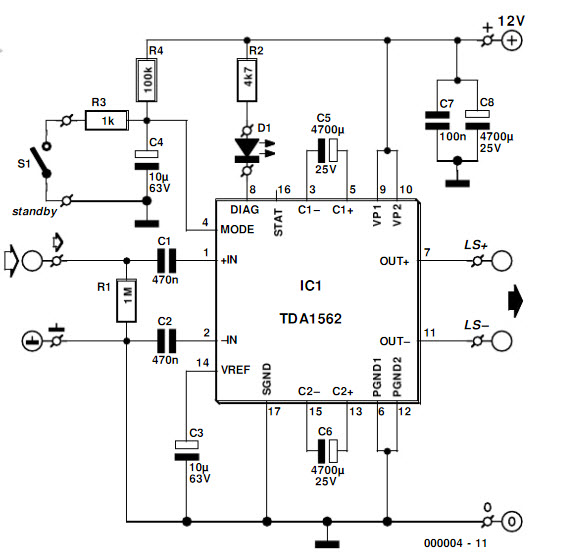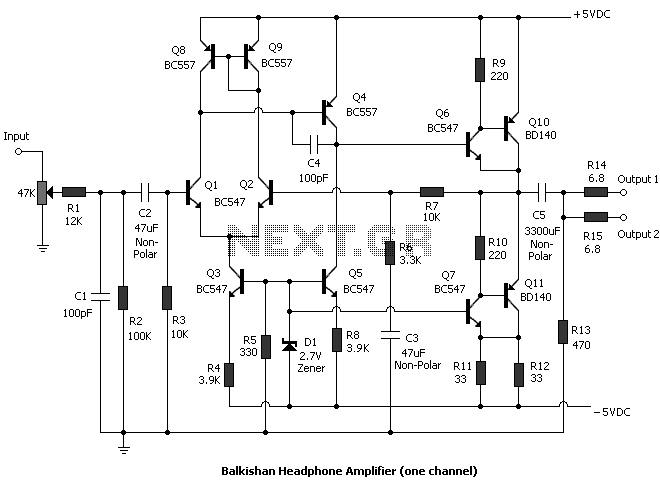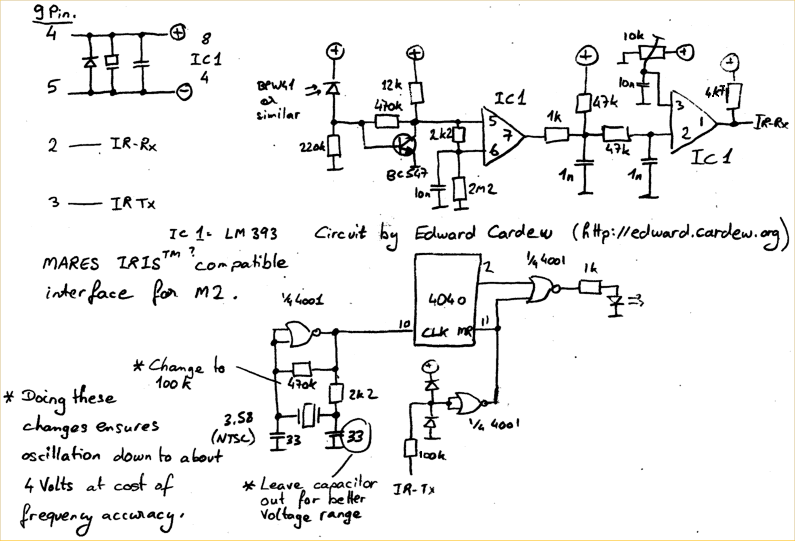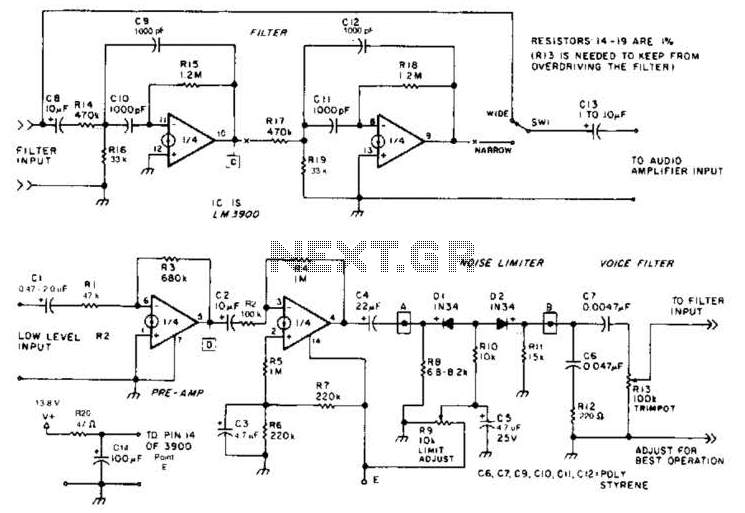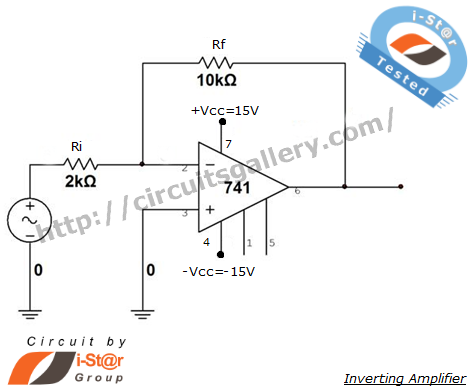
PGA202 / 203 digitally controlled programmable gain instrumentation amplifier circuit
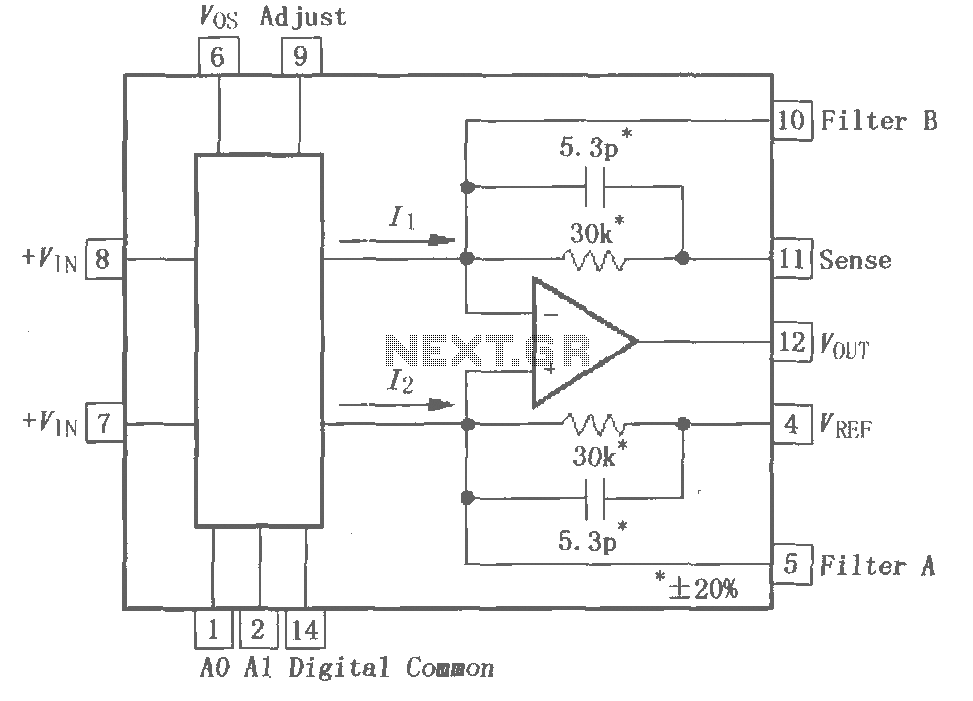
The PGA202 is a digitally controlled programmable gain amplifier with gain settings of G = 1, 10, 100, and 1000. The PGA203 offers gain settings of G = 1, 2, 4, and 8. Both amplifiers are compatible with CMOS and TTL inputs, facilitating easy interfacing with microprocessors. They feature FET input and a new cross-conducting path, ensuring that the gain remains nearly constant within the bandwidth. Gain and offset corrections are achieved through laser trimming, eliminating the need for external components. The PGA202 and PGA203 are available in both ceramic and plastic packaging, with the ceramic version operating across the industrial temperature range and the plastic version functioning throughout the commercial temperature range. The pin arrangement is illustrated in the accompanying figure.
The PGA202 and PGA203 are precision instrumentation amplifiers designed for applications requiring programmable gain and high accuracy. The PGA202's gain settings of 1, 10, 100, and 1000 allow it to be utilized in various signal conditioning tasks, while the PGA203's lower gain options of 1, 2, 4, and 8 make it suitable for applications where smaller gain increments are necessary.
Both devices incorporate advanced features such as FET input stages, which provide high input impedance and low noise, making them ideal for interfacing with sensitive sensors. The new cross-conducting path technology helps maintain a consistent gain across a wide bandwidth, which is critical for high-frequency applications where signal integrity is paramount.
The programmable gain functionality is controlled digitally, allowing for precise adjustments in gain settings via microcontroller or microprocessor interfaces. This digital control also enhances flexibility in system design, as the gain can be modified in real-time to adapt to varying signal conditions.
Gain and offset correction through laser trimming ensure that the amplifiers maintain high accuracy and stability over time, minimizing the need for additional external calibration components. This feature is particularly beneficial in applications where space and component count are critical.
The PGA202 and PGA203 are offered in two packaging options: ceramic and plastic. The ceramic package is designed for industrial applications, providing a wider operating temperature range, while the plastic package is suitable for commercial applications with less stringent temperature requirements. The pin arrangement provided in the accompanying figure aids in the integration of these devices into various circuit designs, ensuring ease of use and compatibility with existing systems.
Overall, the PGA202 and PGA203 are robust solutions for programmable gain amplification, combining digital control, high precision, and flexible packaging options to meet the demands of modern electronic applications.PGA202 is a digitally controlled programmable gain G = 1,10,100,1000 monolithic instrumentation amplifier, PGA203 provide gain G = 1,2,4,8. Both have with CMOS or TTL. Compatible inputs for easy interface to microprocessors. Both FET input and a new cross-conducting path, the gain within the bandwidth remained almost constant. Gain and offset correction by laser, without using external components. PGA202 / 203 ceramic packaging and plastic packaging two forms, ceramic package operates over the industrial temperature range, plastic packaging can work throughout the commercial temperature range.
The pin arrangement shown in FIG.
The PGA202 and PGA203 are precision instrumentation amplifiers designed for applications requiring programmable gain and high accuracy. The PGA202's gain settings of 1, 10, 100, and 1000 allow it to be utilized in various signal conditioning tasks, while the PGA203's lower gain options of 1, 2, 4, and 8 make it suitable for applications where smaller gain increments are necessary.
Both devices incorporate advanced features such as FET input stages, which provide high input impedance and low noise, making them ideal for interfacing with sensitive sensors. The new cross-conducting path technology helps maintain a consistent gain across a wide bandwidth, which is critical for high-frequency applications where signal integrity is paramount.
The programmable gain functionality is controlled digitally, allowing for precise adjustments in gain settings via microcontroller or microprocessor interfaces. This digital control also enhances flexibility in system design, as the gain can be modified in real-time to adapt to varying signal conditions.
Gain and offset correction through laser trimming ensure that the amplifiers maintain high accuracy and stability over time, minimizing the need for additional external calibration components. This feature is particularly beneficial in applications where space and component count are critical.
The PGA202 and PGA203 are offered in two packaging options: ceramic and plastic. The ceramic package is designed for industrial applications, providing a wider operating temperature range, while the plastic package is suitable for commercial applications with less stringent temperature requirements. The pin arrangement provided in the accompanying figure aids in the integration of these devices into various circuit designs, ensuring ease of use and compatibility with existing systems.
Overall, the PGA202 and PGA203 are robust solutions for programmable gain amplification, combining digital control, high precision, and flexible packaging options to meet the demands of modern electronic applications.PGA202 is a digitally controlled programmable gain G = 1,10,100,1000 monolithic instrumentation amplifier, PGA203 provide gain G = 1,2,4,8. Both have with CMOS or TTL. Compatible inputs for easy interface to microprocessors. Both FET input and a new cross-conducting path, the gain within the bandwidth remained almost constant. Gain and offset correction by laser, without using external components. PGA202 / 203 ceramic packaging and plastic packaging two forms, ceramic package operates over the industrial temperature range, plastic packaging can work throughout the commercial temperature range.
The pin arrangement shown in FIG.
